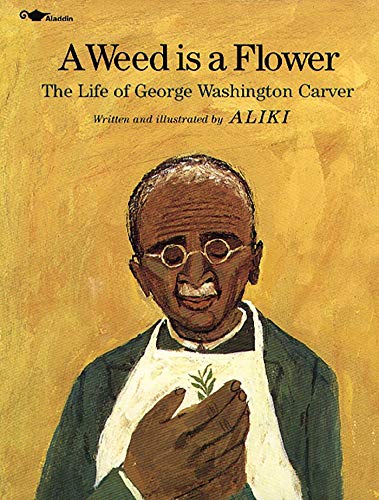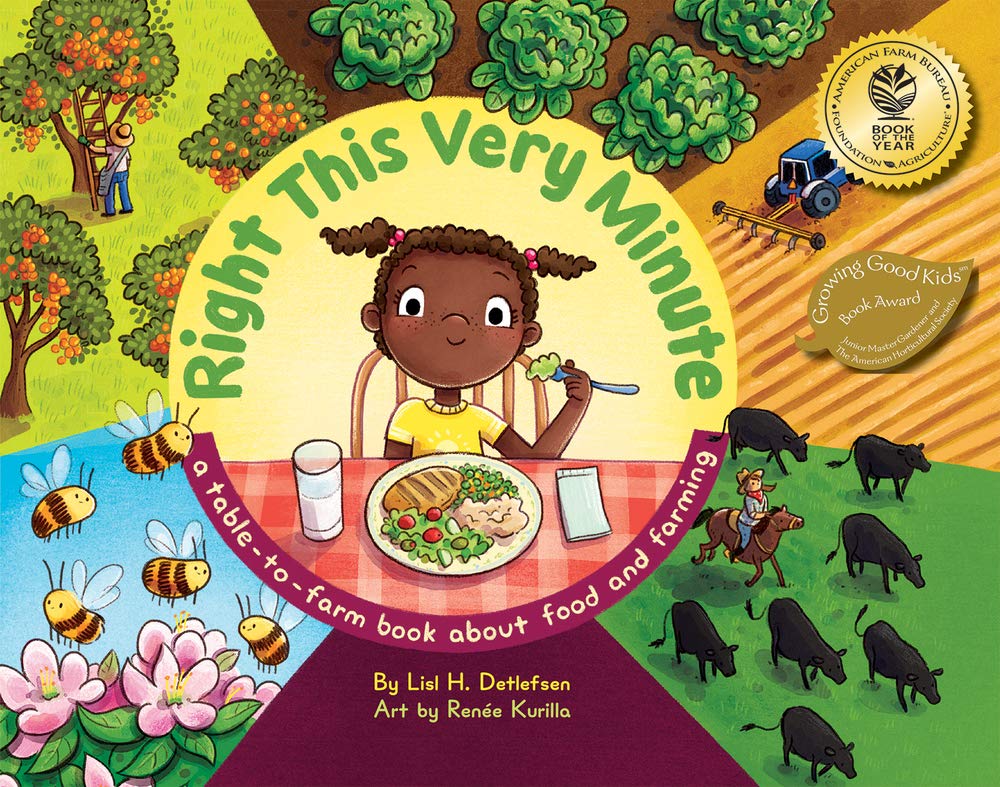Milestone Exploration for Volunteers
Technology & Engineering
Agricultural Inventors
Background Agricultural Connections
Agriculture began around 10,000 BC when humans started domesticating plants and animals to ensure a more reliable food source when compared to hunting and gathering. At that time, most work was accomplished by hand with few tools available. The introduction of powered machinery replaced work previously performed by people and animals (horses, mules, and oxen).
Throughout history, scientific and technological advancements have impacted the agricultural industry by increasing food production and farm efficiency. In the 1940s, one farm in the United States produced enough food to feed 19 people. Today, one US farm produces enough to feed 172 people. The increase in U.S. food production is directly related to the advancement of agricultural technology.
The Food and Agriculture Organization (FAO) of the United Nations (UN) projects the world's population to reach 9.7 billion people by the year 2050. With 9.7 billion people on Earth, the world's farmers will need to grow about 60-70 percent more food than what is now being produced. As the global population increases, farmers will need to utilize innovative technologies to produce more food with fewer resources.
Suggested Book
The Boy Who Changed the World (Norman Borlaug) by Andy Andrews
This book tells the story of Nobel Laureate, Norman Borlaug. Norman grew up as an average farm boy in Iowa, but later his work as a plant scientist reached far and wide to help improve the growth of wheat, rice, and corn all over the world. This book highlights the benefits of emerging science, but also has an underlying message to teach, "Every choice you make, good or bad, can make a difference."

Suggested Book
Eli Whitney and the Cotton Gin by Jessica Gunderson
This graphic novel tells the story of how Eli Whitney invented the cotton gin, and the effects it had on the Southern United States.

Suggested Book
The Girl Who Thought in Pictures: The Story of Dr. Temple Grandin by Julia Finley Mosca
When young Temple Grandin was diagnosed with autism, no one expected her to talk, let alone become one of the most powerful voices in modern science. Yet, the determined visual thinker did just that. Her unique mind allowed her to connect with animals in a special way, helping her invent groundbreaking improvements for farms around the globe!

Suggested Book
John Deere, That's Who! by Tracy Maurer
Back in the 1830s, who was a young blacksmith from Vermont, about to make his mark on American history? John Deere, that's who! This illustrated biography tells the story of John Deere and his contributions to agriculture. Learn how John Deere invented a steel plow and changed farming forever.

Suggested Book
A Weed is a Flower: The Life of George Washington Carver by Aliki
George Washington Carver often said, "A weed is a flower growing in the wrong place." From humble beginnings, Carver became one of the greatest scientists in the United States. His dedication to helping people led him to find over three hundred uses for the peanut and over one hundred uses for the sweet potato. A simple biography of the man born a slave, who became a scientist and devoted his entire life to helping the South improve its agriculture.

Innovating Farm Equipment
Background Agricultural Connections
Life on the farm 100 years ago looked vastly different than it does today, and it will continue to change to meet the needs of our population. Cutting-edge technology and innovations are being used in agriculture. Precision agriculture is an information technology-based, site-specific farm management system that collects and responds to data ensuring that crops receive exactly what they need for optimum health and productivity. Self-driving tractors are autonomous vehicles that use GPS and other wireless technologies to farm land. Agricultural robots automate repetitive farming tasks. Drone applications in agriculture include mapping, surveying, monitoring, planting, crop dusting, and spraying. Advanced laser technology is used on farms to deter birds, level fields, guide harvesting machines, sort agricultural products, and monitor field conditions. These new technologies are being developed with the purpose to overcome the challenges we face in providing food, fuel, and fiber for a growing and changing population.
Suggested Book
The Most Magnificent Thing by Ashley Spires
A young girl sets her mind to creating the most magnificent thing! She has the plans in her head, gathers all the necessary materials, and builds her first prototype. However, her invention is not exactly what she had planned, and after repeated attempts at making her invention "magnificent," she quits. Her pet dog convinces her to walk away, and when she returns she tackles her project with renewed enthusiasm and conviction. The result—the most magnificent thing! This is a fun, educational look at the engineering design process.

Build a Barn
Background Agricultural Connections
A barn is an agricultural building. There are many types of barns—poultry barns, dairy barns, pig barns, lambing barns, hay barns, etc.—and each type serves a specific purpose or function. Barns can be used to shelter livestock, to produce a specific farm product, to store farm products and equipment, or for a combination of purposes.
The specific use of a barn determines its design. Production barns are used to produce a specific farm product such as a dairy barn that houses a milking parlor. Storage barns are organized specific to the crops or equipment that will be stored there. Livestock barns shelter animals and protect them from predators, diseases, bad weather, and extreme temperatures. Livestock barns are engineered to meet the needs of specific livestock—dairy cows, beef cattle, turkeys, chickens, sheep, pigs, etc. Access to feed, water, lighting, and fresh air, as well as waste management and sanitation, must be taken into consideration when designing a barn for livestock. General purpose barns are constructed to be used for a combination of purposes.
A barn's purpose may change over time. A barn that once housed livestock may now house farm equipment, such as tractors, combines, and hay bailers. A farmer may modify a barn to meet the needs of a changing farm. Modern barns utilize high-tech equipment, such as climate control, monitoring systems, robotic assistants, automated feed systems, and sensors, to increase farm efficiency and decrease costs.
There are many benefits to storing hay bales inside a barn. Storing hay in a barn maintains better hay quality, maximizes the nutritional value of the hay, exposes the hay to less moisture and sunlight, decreases the likeliness of spoilage, decreases hay waste, and cuts costs.
Suggested Book
Barn at Night by Michelle Houts
When you grow up on a farm, adventures happen all day long—even at night! On a cold winter evening, a father and daughter go out to the barn and are welcomed with a warm scene. Who is awake, who is asleep, and who is just making their first appearance in the barn?

Farming the Future
Background Agricultural Connections
Farms of the future may look very different than they do today. Innovative technologies will be part of the solution to meet the needs of a growing population. Sustainably increasing our food supply is a challenging problem that requires critical thinking and creative solutions.
Suggested Book
The Magic School Bus Rides Again: Robot Farm by Gabe Polt
Wanda proudly hosts this year's school harvest feast, but she was so busy promoting it she forgot to get the food! Luckily, Ralphie happens to know of a farm that grows the finest produce around, but there's a problem—he thinks it's haunted! There are tractors driven by ghosts, plants that climb walls, and so many robots! Could the spooky discoveries actually be helping the farm?

Career Exploration
Background Agricultural Connections
An agricultural career may involve working directly on a farm or may be linked to farm production through the processing and manufacturing of farmed goods and provided services. Farmers and ranchers work with scientists, technicians, business people, and educators to produce a safe and abundant food supply. Researchers and scientists help develop new seeds, safer methods to protect crops from pests, and more efficient machines that are part of a large, complex system that provides us with the things we use every day.
To meet our current and future needs, agricultural STEM innovators (scientists and engineers), implementers (technicians), and agricultural business leaders are needed to fill a variety of agricultural careers. These innovators, implementers, and leaders will need to think critically and solve problems related to our everyday survival. Most agricultural jobs are STEM related and the "M" or mathematic component requires that students be able to collect data, analyze the data, and present findings for others. Opportunities have expanded in the field of agriculture to include unique positions in sustainable farm management systems, biotechnology, forestry, marketing, engineering, and more.
Suggested Book
Right This Very Minute by Lisl Detlefsen
What's that you say? You're hungry? Right this very minute? Then you need a farmer. You have the stories of so many right here on your table! Learn more about where your food comes from—right this very minute!

Website
AgExplorer
AgExplorer is a comprehensive career resource to help you explore the broad range of careers within the industry of agriculture. Careers may have you using advanced equipment, creating new hybrid seeds, raising animals, managing people, or designing new products and packaging. The industry of agriculture can open up a world of possibilities, and the demand for professionals in every agricultural area is high. Learn more about which career might be right for you by watching the videos, exploring the career pages, and completing the Career Finder interactive.
